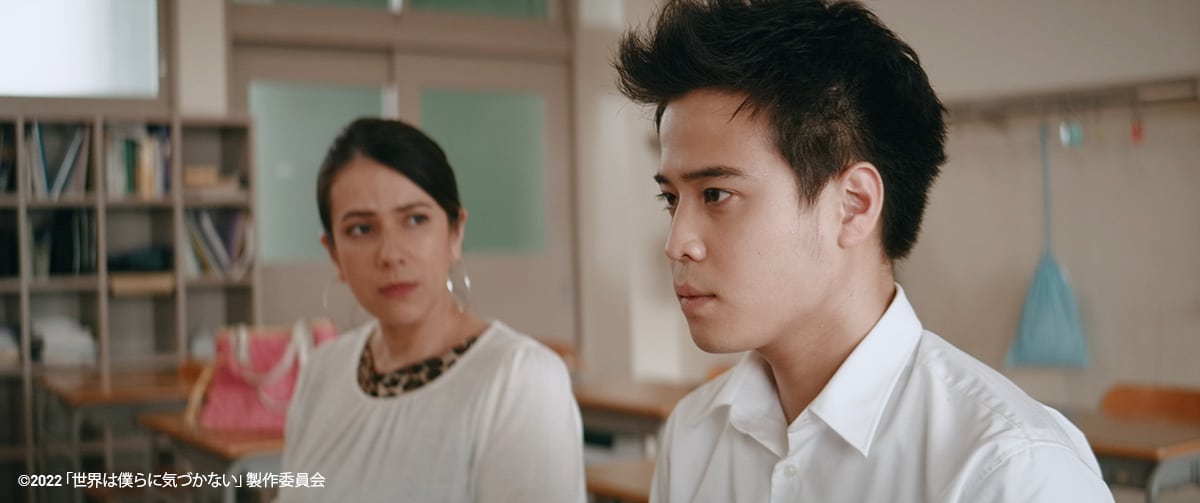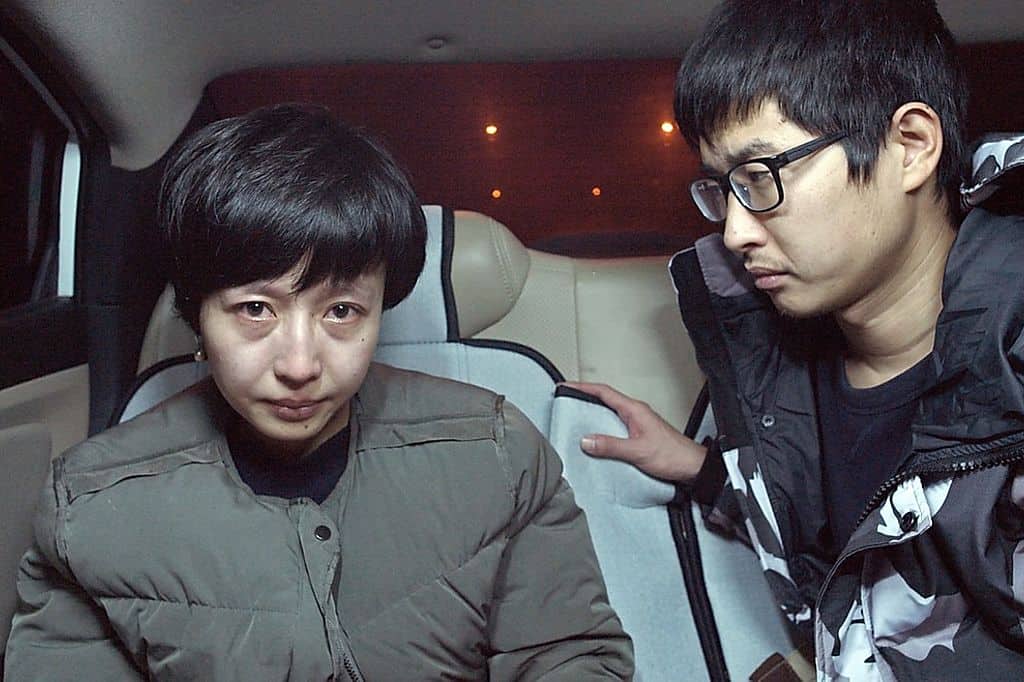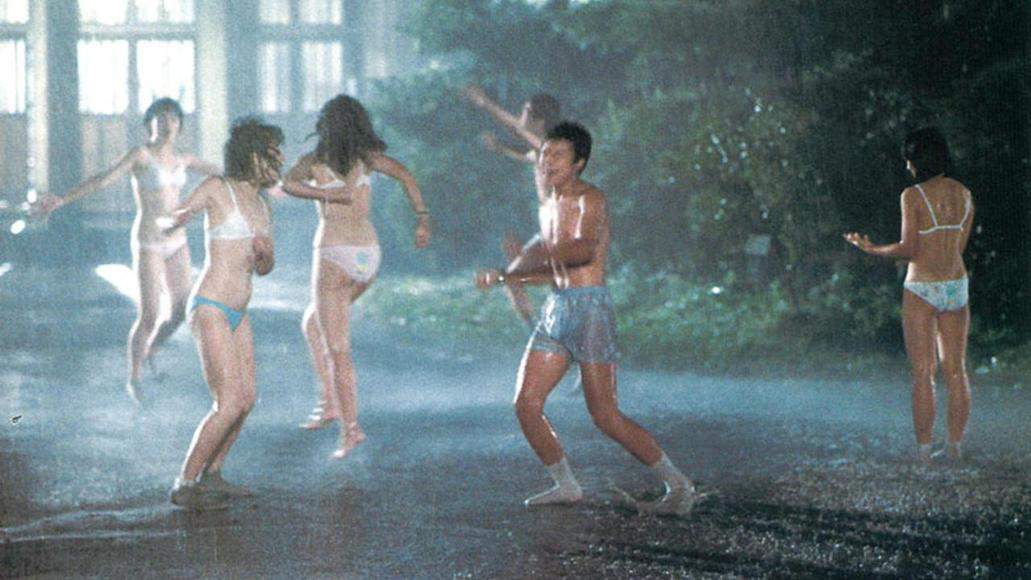“Songlap”, by the husband-wife team of Effendee Mazlan and Fariza Azlina is often described as a social realist film about the disenfranchised in the dark urban underbelly of Kuala Lumpur. But here I want to explore it as a neo-noir that's uniquely Malaysian in its ethos. Songlap is a colloquial term connoting stealing or taking everything, which is about wanting to have it all mindset that is common within criminals or even referring to the ending, where it can be seen in a more positive manner.
“Songlap” is streaming on MUBI
The story is about two brothers both named Adam. The younger is Ad (played by Syafie Naswip) and the elder is Am (played by Shaheizy Sam) who works for a baby-trafficking ring being run by someone only called as Mama. The name choice Adam is as intentional as it can be where they both are sons of a prostitute named Rita (played by Normah Damanhuri) who left them from a young age and doesn't recognise her own sons. Adam bringing the idea of “human” or “humanity” points out how symbolically non-name their names are. It also indicates something significant, as they represent humanity as a whole, the duality of man—the optimistic and emphatic Ad with the pessimistic and nihilistic Am.
On the other hand, we are also introduced to Hawa (played by Sara Ali) who is a pregnant teenager shown to be distraught and highly uncomfortable around her father, Pak Din (played by Omar Abdullah). The name Hawa is the Arabic version of Eve, the “mother of humanity”. Now, this movie is not an allegory to religion nor religious tradition, but there can be interpretations outside of the theme of “humanity” into something more allegorical if one wants to—I won't. Hawa runs away from home to meet her elder sister in Kuantan (around 5 hours away from Kuala Lumpur) but got accidentally trapped into the baby-trafficking ring that both Adams' are part of. Hilarity ensues; well not really.
Not going too much into formalist reading, there's a certain off-kilter-ness about this movie. The central focus of the shots is slightly off, hovering around the centre but is never stable, never static, never really symmetrical. It also creates a sort of diagonal effect, very slightly again, like an unintended optical illusion. The subtle off-kilter-ness, compounded with the subtle camera shakes, (shots are always from the eye-line of the characters, at times taking over their eyes, independent documentary-esque aesthetics with clear late noughties Malaysian indie zeitgeist) really sells the idea that we are not just watching a movie from afar but vicariously living through the characters in this dark, bleak, alienating world.
Everything described above,says the film is in a particular genre, noir. I want to say neo-noir despite that stylistics-wise, it is a bit subtler. Maybe the better wording is realistic over stylistic. At times it is more of anti-neo-noir (opposite of) with more scenes being shot during daytime where brooding shadows are not cast; male main character (Am) is not a tough guy-type reminiscent of older noir movies which are tied to the Americana ethos, he is more a sleazy smooth-talker-type that wants to avoid violence as much as he can; the female main character (Hawa) is not just a plot device or femme fatale that spells the end for our hero, but has her own motivation and goals.
All the opposites above are present here to make the noir to be Malaysian. It throws out the Americana ethos built by both older films and political situation there for a more Malaysiana one. Then, there were already many crime movies in Malaysia that are more fantastical; cool characters with a moralistic ending such as “KL Menjerit” (2002, Badaruddin Azmi) that inspired a whole sub-genre of youth racing sub-culture movies.
Come 2010s, suddenly, almost as if it was planned, we're bombarded with movies such as “Songlap”, “Bunohan” (2011, Dain Said – honestly, all three of his films fits), “Chow Kit” (2012, Rosihan Zain and Brandon Lee), “Jagat” (2015, Shanjey Kumar Perumal), “Pekak” (2016, Mohd Khairul Azri Md Noor), “One Two Jaga” (2018, Nam Ron), “Fly By Night” (2018, Zahir Omar), and others with a more gritty and realistic portrayal of the life of the disenfranchised and/or in crime. How crime becomes an inescapable lifestyle. It is not romanticised nor moralised, but to portray a reality that we might not have known.

There is also a strong political theme about human-trafficking that escapes the attention of the middle-class here, as Malaysia is often in the bottom tier of USA's Annual Human Trafficking Report. We were in Tier 3 (the lowest tier) until 2015 and was upgraded to Tier 1 in 2017 but downgraded back to Tier 2 in 2018. This is mainly due to the over-reliance to foreign labourer that even until a few months ago, there were cases of corrupt officials in this issue. In a conversation with Locarno Film Festival, both Effendee Mazlan and Fariza Azlina explained they were inspired by a real news report about a similar situation of a baby-trafficking ring.
American neo-noir often commentates in broad strokes of their political climate, either in the Reagan era, or Bush era, traditionalism vs modernism, how morality changes, how romanticizing the past might not really be best. Here, at least from the examples of films I mentioned above, is more specific on how there are hidden aspects of urban life that are mainly caused by bad policies, bad execution of policies and just plain greed. Which also means the main antagonistic element of “Songlap” is not any specific character but the situation they're in. If we look at humanity as the protagonist, as established by the two Adams and Hawa, the antagonist is the complicated world they're in that blocks their paths to a better life. Kuala Lumpur, in itself, is the antagonist. Which is in-line with a typical noir movie.
To round things up (spoiler alert):
You have complicated characters who are alienated, nihilistic, distraught and jaded; an antagonistic setting to show certain realities of urban life not experienced nor seen by the middle class; commentating on local and current political issues; you have the McGuffin (Hawa's baby, both wanted by Mama's trafficking-ring and Pak Din, Hawa's father); making a life-changing decision because of a woman (when Ad realises Hawa is his recently dead best friend's younger sister); being chased by the mob because of the McGuffin and facing violence while the film ends with the characters breaking free with violence (Hawa's end with Pak Din); with opposing endings for each brother, Ad and Hawa get ahappy ending, where Am didn't really. It's bittersweet in a way.
Now, isn't that a noir film?















